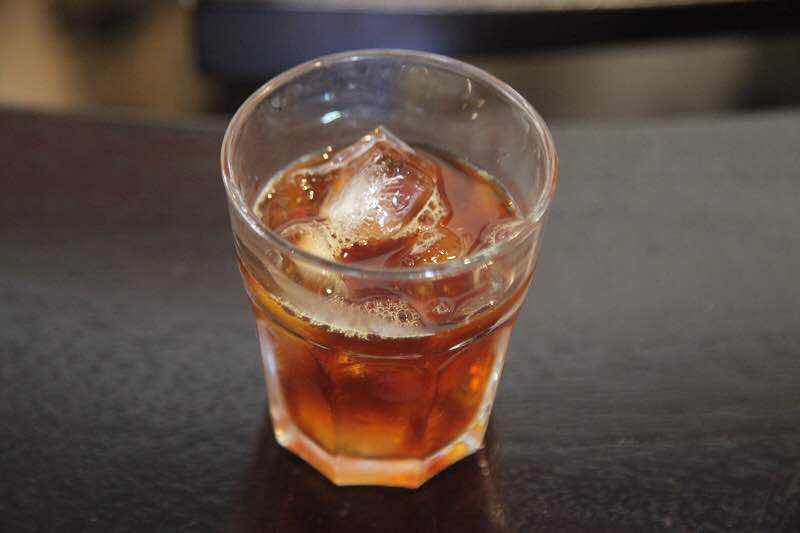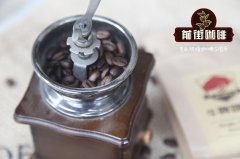What are the methods of making iced coffee? how to choose the iced coffee that suits you best?

Professional coffee knowledge exchange more coffee bean information please follow the coffee workshop (Wechat official account cafe_style)
Walk into the world of iced coffee
The World of Iced Coffee (English below)
In view of the fact that there is no autumn in July, you might as well learn more about iced coffee to prolong your attachment to summer. What kind of iced coffee is on the market? What's the difference between them? Compared with hot coffee, iced coffee may not be so popular. The following basic introduction hopes to help you choose the iced coffee that works best for you.
Hot boiled vs cold extraction
The biggest difference between hot coffee and iced coffee is whether hot water is used in the brewing process. Temperature is one of the most important factors in the extraction process of coffee to produce taste and aroma, so whether to cool the coffee after hot cooking or cold extraction directly (without any heating steps) is a crucial decision.
Hot cooking
Hot brewed coffee, whether using machine extraction of espresso, hand brewing (or other manual methods), or mass production of coffee, baristas can extract different flavor and aroma components from coffee powder. that is, hot-brewed coffee can get stronger acidity, richer floral aroma, or stronger flavor and sweetness. How hot coffee is subsequently cooled can also affect the final taste of frozen coffee. In order to preserve the subtle differences in aroma and taste of coffee, the coffee should be cooled immediately after it is obtained by hot brewing. Delayed cooling may cause the coffee to lose its original flavor and become sour. Iced coffee can be made in large quantities by using a cooling device (similar to the function of a refrigerator). However, for most frozen coffee production, using ice is an easier way to reduce costs. It should be noted that in this process, ice will inevitably melt, dilute the coffee and affect the taste of the coffee. When choosing the brewing ratio of coffee to water, we should consider the ice part that melts into water to prevent the drink from becoming too light and tasteless. Finally, the choice of brewing method will also affect the taste of coffee. Most people may choose to use espresso machines because espresso ensures that coffee tastes stronger and cools more easily (and faster) because of its smaller portions. In addition, because of the strong taste of Italian concentration, the cooling process will not greatly dilute the coffee. However, the premise of using this method is that you need to have an espresso machine, and for those who do not have an espresso machine, they can choose the basic hand brewing method to get coffee, with less hot water and a little ice during brewing. In fact, compared to concentrated extraction, many coffee lovers prefer hand-brewing to retain the aroma and fruit characteristics of coffee.
Iced coffee that cools immediately after hot cooking includes: frozen American coffee: pour extracted espresso into a cup filled with ice and water; frozen hand-brewed coffee: put ice in a standard hand-brewing pot in advance.
Cold extract coffee:
The corresponding to the hot cooking method is, of course, the ice brewing method. Cold coffee is becoming more and more popular around the world, often in brown glass bottles with Kraft paper labels or poured from a beer faucet with nitrogen. So, what is the taste of cold coffee? There are two main types of cold-extracted coffee: one is osmotic brewing (the water permeates through the coffee powder), and the other is completely soaked (water and coffee are always together during the brewing process). The most common penetration method for ice-brewed coffee is ice droplets. This brewing method has a very visual effect: the ice slowly melts in the container, and the resulting water droplets are injected into the container containing coffee powder through a glass cylinder. The slow flow of ice droplets ensures that the water permeates the coffee powder completely, and this slow "journey" can extract large amounts of soluble matter from the coffee powder. The overall time of the ice droplets depends on the amount of coffee brewed, but it usually takes at least 4 to 6 hours. Ice drop coffee has a mellow taste and a good balance between earthy aroma and fresh taste. The most common method of complete soaking in ice brews is Toddy (Toddy is a cold bubble pot), which is less fruity, but can make more coffee at once. First, pour the coffee powder into a large cloth bag, then put the cloth bag into a large container of cold water, mix the coffee and water, and leave it in the refrigerator for 8 to 12 hours. After soaking, slowly pull the cloth bag out of the container and keep the cooled brewed coffee in the container. Because it is extracted at a low temperature for a long time, this brewing method gives the coffee a unique taste, mixed with earthy aromas, musk deer, berries and other flavors reminiscent of fermentation. Coffee brewed with Toddy is usually very strong and should be served with ice, water or milk before drinking.
I hope the above can simply introduce you to the brewing methods of iced coffee from a professional point of view, as well as the similarities and differences of various brewing methods. Remember, although coffee brewing methods are different, there are many factors that affect the taste of the final coffee product, including (but not limited to) the origin of coffee beans, roasting, the ratio of coffee to water, grinding degree, brewing time, etc.
Thank you for reading.
Important Notice :
前街咖啡 FrontStreet Coffee has moved to new addredd:
FrontStreet Coffee Address: 315,Donghua East Road,GuangZhou
Tel:020 38364473
- Prev

Columbia LA PALMA & TUCAN Red Wine treatment / anaerobic fermentation
Professional coffee knowledge exchange more coffee bean information please follow the coffee workshop (Wechat official account cafe_style) varieties: Castillo processing: red wine treatment / anaerobic fermentation sensory information score: 87 exquisite, bergamot, lemon, melon, sweet. About the LA PALMA and EL TUCAN projects: we are the best coffee grower and processing expert in Colombia.
- Next

Columbia Manor boutique coffee beans Vera Cruz Farm extended fermentation treatment of flavor and
Professional coffee knowledge exchange more coffee bean information please follow the coffee workshop (Wechat official account cafe_style) Columbia Manor boutique coffee beans Vera Cruz farm extended fermentation of the flavor and taste characteristics? Vera Cruz Farm Finca Veracruz extended fermentation method Vera Cruz (Finca Veracruz) belongs to Santa Barbara Village in Colombia.
Related
- Detailed explanation of Jadeite planting Land in Panamanian Jadeite Manor introduction to the grading system of Jadeite competitive bidding, Red bid, Green bid and Rose Summer
- Story of Coffee planting in Brenka region of Costa Rica Stonehenge Manor anaerobic heavy honey treatment of flavor mouth
- What's on the barrel of Blue Mountain Coffee beans?
- Can American coffee also pull flowers? How to use hot American style to pull out a good-looking pattern?
- Can you make a cold extract with coffee beans? What is the right proportion for cold-extracted coffee formula?
- Indonesian PWN Gold Mandrine Coffee Origin Features Flavor How to Chong? Mandolin coffee is American.
- A brief introduction to the flavor characteristics of Brazilian yellow bourbon coffee beans
- What is the effect of different water quality on the flavor of cold-extracted coffee? What kind of water is best for brewing coffee?
- Why do you think of Rose Summer whenever you mention Panamanian coffee?
- Introduction to the characteristics of authentic blue mountain coffee bean producing areas? What is the CIB Coffee Authority in Jamaica?

